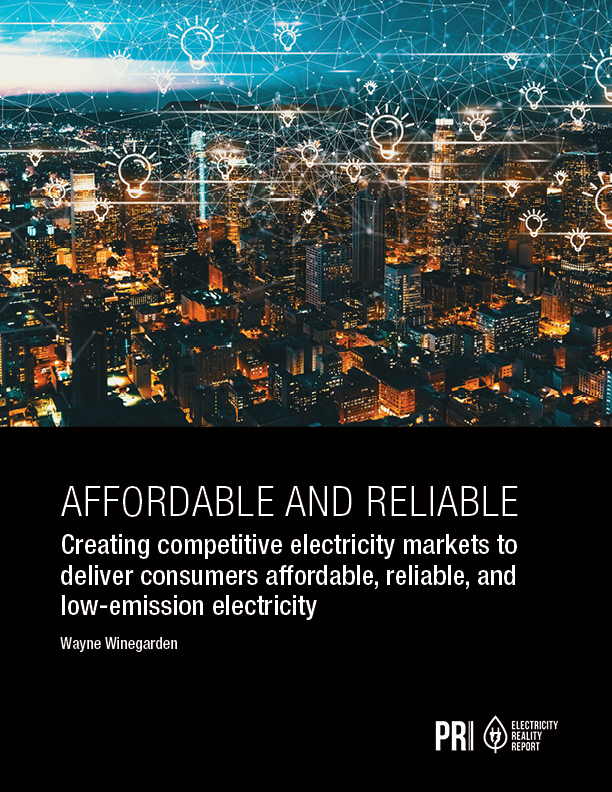States with competitive electricity markets saw cheaper energy prices, more energy infrastructure investment to improve efficiency and reliability, and greater emission reductions compared to monopoly states, finds a new study released today by the nonpartisan Pacific Research Institute, a California-based, free-market think tank.
“Residents and businesses lose out when states cling to outdated government-mandated electricity monopolies,” said Dr. Wayne Winegarden, Pacific Research Institute senior fellow in business and economics and author of “Affordable and Reliable.” “Customers in monopoly states pay higher energy prices, see less effective infrastructure investment, fewer emission reductions, and endure less reliable power systems.”
Click here to download a copy of the study
Seven regional transmission organizations (RTOs) and independent system operators (ISOs) covering most of the country outside of the Southeast, Southwest, and Northwest promote wholesale competition. 13 states plus the District of Columbia empower retail competition, allowing customers to choose a supplier that meets their desired combination of price, reliability, and generation.
Among key findings of “Affordable and Reliable”:
Competition Lowers Prices for Customers
Empowering generators to compete with one another in established wholesale markets has led to significant declines in the wholesale electricity costs. Pricing data examined in three key markets demonstrate that wholesale electricity prices in competitive markets are trending downward and were at or near 6-year lows as of 2020. For example:
- Prices in PJM were 41.7 percent lower as of 2020 and at $21.40/MWh were the lowest prices of the competitive markets examined.
- Prices in the New England ISO were 44.3 percent lower as of 2020
- Prices in the Lower Hudson Valley zone of the New York ISO were 26.0 percent lower as of 2020
- Prices in the New York City zone of the New York ISO were 44.8 percent lower as of 2020.
As it relates to retail competition:
- States with competitive retail electricity markets have seen smaller price growth compared to monopoly states. Since competition was fully implemented, the 14 jurisdictions with retail electricity competition saw prices decline 0.3 percent between 2008 and 2020 compared to a 20.7 percent price increase in the states lacking retail competition, based on EIA data calculations.
- Four of the five states with the lowest price increases during the period (Pennsylvania, Illinois, New Jersey, and New York) were competitive states, while the ten states with the largest price increases were monopoly states.
Competition Improves Reliability and Efficiency
Competition increases reliability as RTOs and ISOs cover a wider geographic area, and have more diverse energy generation options and market-established prices.
- Reviewing two common measures of reliability, PRI’s analysis shows that the SAIFI was 10.4 percent lower in states with retail competition compared to the monopoly states and 6.5 percent lower on the SAIDI. SAIFI is a measure of the frequency of a sustained interruption whereas SAIDI is a measure of the duration of a sustained recovery.
Competition Boosts Emission Reductions
Reviewing state emission levels based on EIA data between 2008 and 2018, PRI’s analysis shows that emissions in competitive states declined on average 12.1 percent, compared to 7.3 percent in monopoly states. Competitive retail markets empower consumers to express their electricity preferences including receiving power generated from lower-emission sources.
Winegarden concluded, “Establishing competitive electricity markets should be a priority for state policymakers to lower costs, boost economic competitiveness, ensure power reliability, and make further progress in lowering emissions.”
Earlier this year, PRI launched the “Electricity Reality Report” – www.electricityrealityreport.org – offering news and analysis on policy, market, and technology trends that affect America’s ability to power homes and businesses with reliable low-cost energy.

